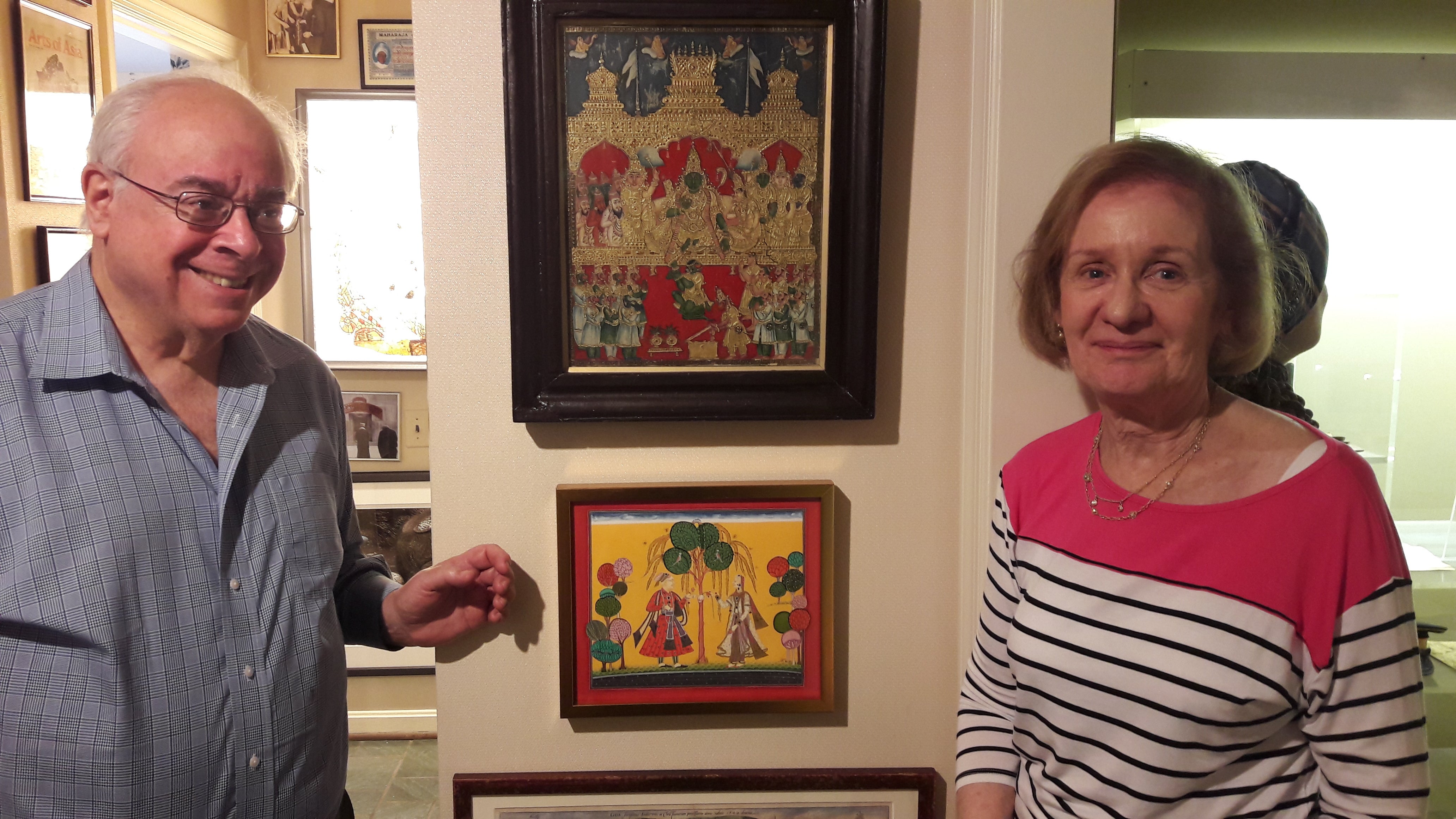University of Pennsylvania Libraries Receives Major Gift of Kenneth and Joyce Robbins Collection of South Asia History
Kenneth and Joyce Robbins designated the Penn Libraries as the recipient of the Kenneth and Joyce Robbins Collection of South Asia History in their estate planning.

Over the course of more than five decades, Kenneth X. Robbins and his wife Joyce Robbins have amassed a collection of more than 100,000 items relating to the history of South Asia, Africans in the greater Indian Ocean world, and the Jewish diaspora in India and beyond. This year, they designated the Penn Libraries as the recipient of the Kenneth and Joyce Robbins Collection of South Asia History in their estate planning.
“The Penn Libraries has made it a strategic priority to build, preserve, and increase access to deep and distinctive collections,” says Constantia Constantinou, H. Carton Rogers III Vice Provost and Director of Libraries. “The Robbinses’ generous gift will make our Center for Global Collections a premier destination for students and researchers of South Asian history.”
Mitch Fraas, Director of Special Collections and Research Services, says, "This is the largest collection of Indian ephemera outside of India. It provides a lot of insight [into] social and cultural history topics that people are interested in. Generations of scholars will find research topics here and use this material in their teaching.”

Kenneth Robbins describes his collecting focus as materials pertaining to maharajas and other local and regional Indian rulers, as well as Sufis and Indian minority groups, specifically Jews and African Muslims. Within these broad categories, the Robbinses’ holdings provide myriad opportunities to delve into particular topics and periods of time.
“There is something in here to appeal to everybody, from the people who are studying imperialism to the people who are studying South Asia, to art historians, to historians of religion,” says Robbins, who hopes the Penn community and the greater community of scholars interested in South Asian history will deeply engage and interact with the collection.
Fraas adds, “These are the deep histories that people are looking for that are hard to find in official sources … and also across a range of media.”
The collection is impressive in not only the breadth of topics it covers, but also its sheer scale and the diversity of materials represented. Although it includes the books, manuscripts, medals, and fine artworks one would expect, the bulk of it comprises unique ephemera: including Hindu, Islamic, and Bollywood movie posters, postcards, flags, and manuscript ledgers from Indian synagogues.
“There are a lot of valuable things [in the collection]. But there also are a lot of things that nobody has collected because unless they are in huge quantities, they don’t have any historical importance,” Robbins says. “You get a much fuller picture, and that’s the idea.”
In order to facilitate this, Robbins and his wife are supplementing their collections gift with a planned gift of $400,000 to the Libraries for processing and preservation.
Fraas has visited Robbins to view the collection several times, enjoying the anecdotes from what he calls Robbins’ “encyclopedic memory” of these items and their significance. Each time, he learns something new; but when asked about highlights of the collection, he says, “By and large, the great discoveries are still yet to be made.”
Indeed, Robbins himself continues to make new connections and explore new subjects. “My goal is to always find a new direction," Robbins explains. “As I find each piece of new material, it leads me in different ways. For example, I was already collecting things about Jews in India. And now I’m collecting things about Jews in North Africa and the Ottoman Empire.” He also expanded into visual documentation of the history of Africa, the Islamic world, and Asia with special emphasis on the later Ottoman empire, the first Iran constitutional revolution (1906), the European attacks on Morocco, the Boxer Rebellion, and other international crises of the late 19th and early 20th centuries.
Robbins’ scholarly output — books, articles, exhibitions, and presentations — based on the collection is extensive: he has co-authored or co-edited many titles based on his findings. The seven most recently published volumes are: African Rulers and Generals in India; African Diasporan Communities across South Asia; Black Ambassadors of Politics, Religion, and Jazz in India; The Making and Unmaking of the States of Gujarat 1800-1950; Rulers, Administration, and Economic History of the States of Gujarat 1800-1950; Patronage, Painting, Poetry, and Prestige in the Princely States of Gujarat; and Four People of the Book: From Foreign Jewish Roots to South Asian Islamic Roles. To follow the thread of his publications is to shadow Robbins on a trip through the collection.
In 1968, he began collecting Rajput, Deccani, Mughal, and Company School paintings sold by dealers and auction houses. In 1979, he retrieved his boyhood collection of stamps, mostly obtained from visits to UN consulates. He was shocked to also find an entire carton of stamped documents from obscure Indian princely states like Maler Kotla and Bamra. At this point, he began thinking like a researcher. This led to exhibitions like one on medicine and maharajas using everything from a 19th century painting of an elephant attacked by a “fever demon” to postcards of hospitals staffed by women doctors for female patients. Robbins found that only coin collectors knew that Bengal was ruled by an East African dynasty from 1486 to 1493. It became his mission to bring such information into general research discourses through exhibitions and publications, and by giving the collection to the Penn Libraries.
“You get all sorts of information from the collectors who have all sorts of data … but that information is lost to the general researcher,” he says. “My intention [by giving the collection to the Penn Libraries] is to bring that into the general historical discussion.”
Date
October 12, 2022
